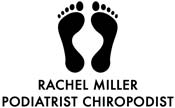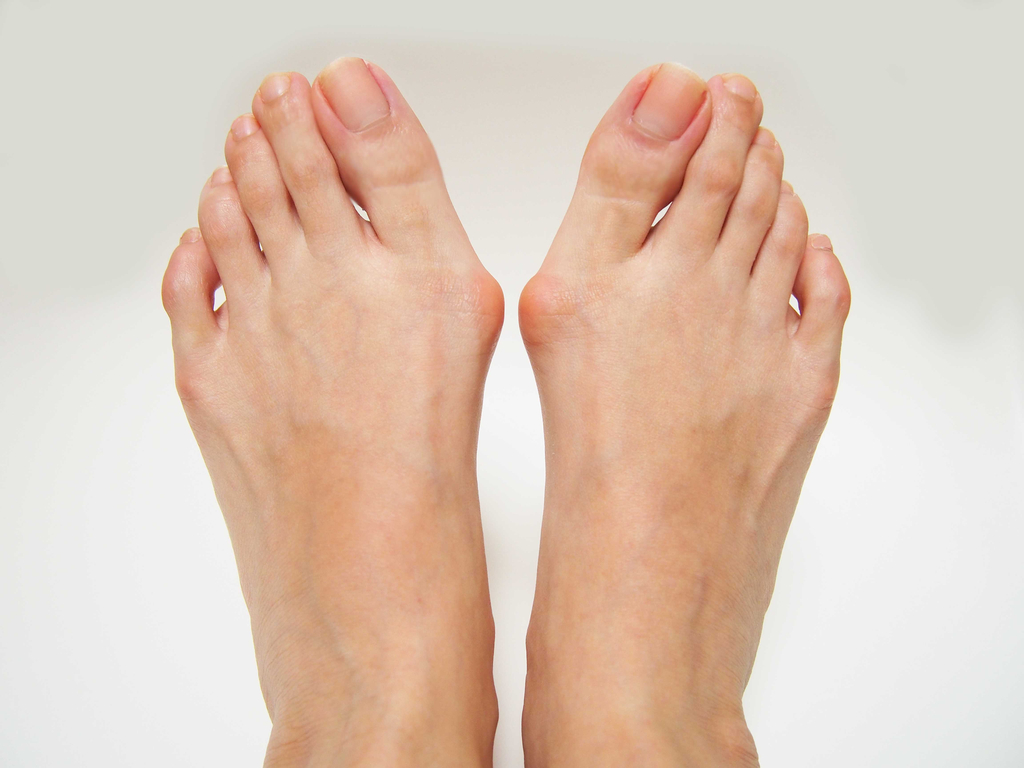Bunions
A bunion (hallux vulgus) is a lump that forms on the side of your big toe joint, causing your toe to bend inwards and the joint to protrude.
A bunion can press against shoes, putting pressure on the joint which can become inflamed, stiff and painful. The pain can become debilitating, discouraging walking and exercise, which can be isolating and detrimental to your overall good health.
Rachel Miller is a highly experienced podiatrist who treats many patients for bunions. Please see below if you want more detailed explanation of bunions, their symptoms, causes and treatment.
Contact the Centre for an appointment on 020 8348 5553
Bunions
Bunions can form over an extended period of time and the protrusion can gradually increase in size. Bunions are far more common in women and in older individuals, but can occur in people of all ages. Juvenile bunions are commonly found in girls aged between 10 – 15 years old. Smaller bunions (bunionettes) can develop on the joint of your little toe.
Symptoms of bunions
Symptoms of bunions include:
- swelling
- redness
- tenderness or pain at the base of the big toe and under the ball of your foot
- the bump can become shiny and warm to the touch
- callused skin
- sore skin over the top of the bunion
- changes to the shape of your foot making shoes hard to fit
These symptoms can sometimes get worse if the bunion is not treated.
Causes of bunions
There are a number of possible causes for bunions including:
- Wearing tight narrow shoes, or ones with high heels, can produce a bunion and can aggravate them. However, shoes are not necessarily the underlying cause.
- The anatomy, the shape and structure of feet, make some people more susceptible to bunions. This can be an inherited trait. If you have low arches or loose joints and tendons, you may be more prone to developing bunions.
- Some forms of arthritis, such as psoriatic arthritis, gout and rheumatoid arthritis, which damages the cartilage within the joint, can also be significant in the development of bunions.
- Other conditions and syndromes, such as cerebral palsy and Marfan syndrome, can be a factor.
- People in jobs who have to stand a lot, such as teaching and nursing, can be susceptible to bunions. Dancers put a great deal of stress through the first metatarsophalangeal joint and these forces may produce an environment in which bunions develop.
- Women can develop bunions and other foot problems during pregnancy because hormonal changes loosen the ligaments and flatten the feet. The menopause can also exacerbate bunions.
Complications can include:
- Bursitis. Bursas are fluid-filled pads that cushion the bones near your joints which can become inflamed with your shoes constantly putting pressure against your joint.
- Hammertoe. Is a deformity, an abnormal bend in the middle joint of a toe. With bunions, the big toe pushes against the second toe which can cause structural deformities, pain, pressure and swelling. For more detailed information about hammertoes see the Hammer toe, claw and mallet toe page.
- Metatarsalgia. An umbrella term for conditions often in the ball of your foot. A bunion can change the way your foot strikes the ground creating extra stress in your ball of your foot that can cause pain and swelling. For more detailed information see the Metatarsalgia page.
- Corns and calluses. Thickened and hardened layers of skin can form as your feet are trying to protect themselves against rubbing and pressure. This can be painful and tender. For more detailed information see the Corns and calluses page.
- Ingrown toenails. The big toe has deviated and this can place can pressure on the toenail which can become ingrown and painful. For more detailed information see the Ingrown toenails page.
Treatment of bunions
- Wearing the right kind of shoes to help relieve pressure can be central to treating bunions. Shoes should be chosen carefully and conform to the shape of your feet to avoid squeezing or pressing on them.
- Bunion pads, cushions or correctors, can help stop your foot rubbing on your shoe and relieve the pressure of your joint rubbing against your shoe.
- Some anti-inflammatory drugs can be helpful.
- Warm soaks and ice packs can help relieve pain and inflammation.
- There are a number of different surgical procedures used to treat bunions. The type of surgery recommended for you will depend on the severity of the deformity.
- An orthotic insole can be a beneficial non-surgical intervention that can assist in aligning issues that contribute to the development of bunions. In the case of a flexible overpronated foot, an orthotic insole may support and re-align the foot structure to reduce the pressure on the inside of the first metatarsophalangeal (MTP) joint and its rubbing against your shoe. For a rigid underpronated foot, orthotics may distribute weight across the foot to reduce the pressure that accumulates in the forefoot. This might help to slow down the progression of your bunion’s development and alleviate pain.
If you do suffer from bunions you should see an experienced podiatrist who can help with your condition. You can be offered footwear advice, pads, self-help advice and a bespoke orthotic insole can be prescribed that may provide positive benefits as a non-surgical intervention.
Call 020 8348 5553 to make an appointment
Rachel Miller is a highly experienced podiatrist specialising in biomechanics who sees many patients for bunions. Her north London clinic, Highgate Podiatry, is in Highgate Village, 14 Pond Square, N6 6BA, London. Clinics are held every Sunday, Wednesday and Thursday. Please contact the clinic for an appointment on 020 8348 5553. For the clinic’s address, map and directions see the Contact page and for information about orthotic insoles and biomechanics see the Biomechanics page.






